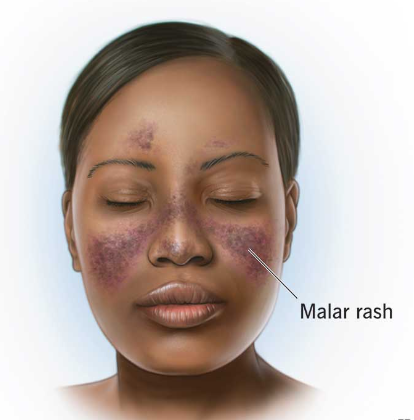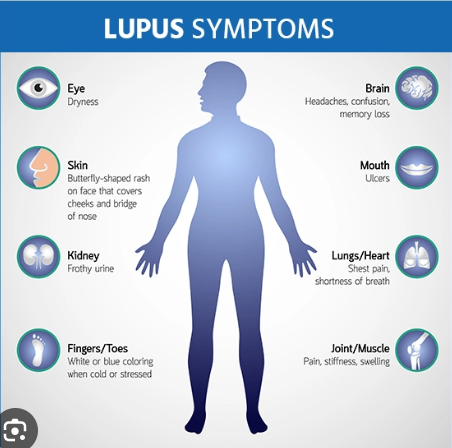By Joke Kujenya
NOT MANY of us were aware that May 10, 2024 was World Lupus Day; a day set for the global lupus community to stress the urgent need for increased awareness and better treatment options for lupus patients worldwide.
A comprehensive survey conducted by the World Lupus Federation (WLF) even revealed the profound and pervasive challenges faced by those living with this chronic autoimmune disease, affecting over five million people across the world.
The survey, which garnered responses from more than 7,700 lupus patients across 100 countries, underscores the widespread reliance on oral steroids as a primary treatment method.
An overwhelming 91% of respondents reported using steroids to manage their condition.
Disturbingly, 75% of these patients have been on steroid therapy for over a year, and 27% for more than a decade.

The data also shows that 43% of respondents are taking higher than the recommended maintenance doses, with 58% consuming dosages of 30 mg or higher, exacerbating concerns over long-term health effects.
But Wait, What is Lupus?
Lupus, is a condition characterized by the immune system’s attack on the body’s own tissues, leads to inflammation and damage in vital organs such as the heart, kidneys, and lungs.
Medical surveys say that steroids, while effective in reducing inflammation, come with a host of severe side effects.
The survey reveals that 96% of steroid users are worried about these long-term impacts, with six in ten experiencing major health issues like diabetes, heart disease, organ failure, osteoporosis, or vision impairment.
This statistic rises to 70% for those on prolonged steroid treatment.
Additionally, 95% of respondents reported suffering from at least one side effect, with an average of six side effects per individual. Common issues include weight gain (77%), mood swings (54%), changes in appearance (53%), and insomnia (52%).
These findings paint a stark picture of the heavy toll steroid treatment takes on lupus patients’ lives.
Dr. Susan Manzi, Medical Director of the Lupus Foundation of America, highlighted the gravity of the situation.
She said: “While steroids are crucial in managing lupus, their significant side effects emphasize the urgent need for safer, more effective treatment options,” as survey also revealed gaps in patient-centered care, with 39% of respondents indicating that their healthcare providers did not involve them in steroid dosage decisions.

Call for Global Action and Solidarity
In response to these challenges, the WLF is calling for global action and solidarity on World Lupus Day. Established to unite lupus organizations worldwide during Lupus Awareness Month every May 10 as the day aims to draw attention to the disease’s impact and the critical need for improved treatment and care.
On May 10, lupus advocates and allies around the world usually wear purple, share personal stories, engage policymakers, and flood social media with information about lupus. Iconic landmarks are also illuminated in purple, symbolizing hope and solidarity with those affected by the disease.
The essence of the global initiative is to further amplify the voices of lupus patients and drive the demand for better treatment options.

By sharing the survey results and raising awareness, the lupus community hopes to foster greater understanding and support for those battling this debilitating disease.
As the World Lupus Day was commemorated, the call to action is clear: it is time for the global community to recognize the severity of the lupus crisis and work together to ensure that those affected receive the care and treatment they need as the resilience and unity of the lupus community continue to inspire hope and drive progress towards a future where better, safer treatments are available for all.
Understanding Lupus: Indicators, Analysis, and Management
LUPUS is an autoimmune disease in which the body’s immune system mistakenly attacks its own tissues and organs. This inflammatory response can impact various body systems, including the joints, skin, kidneys, blood cells, brain, heart, and lungs.
Diagnosing lupus can be challenging because its symptoms often resemble those of other conditions. A hallmark sign of lupus is a facial rash that spreads across the cheeks and resembles butterfly wings, though this occurs in many, but not all, lupus cases.
Causes and Triggers
Certain individuals may have a genetic predisposition to developing lupus. Environmental factors such as infections, specific medications, or even sunlight exposure can trigger the onset of the disease. Although there is no cure for lupus, treatments are available to help manage and control symptoms.
Symptoms
Lupus presents uniquely in each individual, with symptoms that can appear suddenly or develop gradually. These symptoms can range from mild to severe and may be temporary or permanent. Most lupus patients experience mild disease episodes, known as flares, where symptoms worsen temporarily before improving or disappearing for a time.
The symptoms a person experience will depend on the body systems affected by lupus. Common symptoms include:
- Fatigue
- Fever
- Joint pain, stiffness, and swelling
- Butterfly-shaped facial rash that covers the cheeks and bridge of the nose
- Skin lesions that appear or worsen with sun exposure
- Raynaud’s phenomenon, where fingers and toes turn white or blue in response to cold or stress
- Shortness of breath
- Chest pain
- Dry eyes
- Headaches, confusion, and memory loss
- Facial Rash
One of the most recognizable signs of lupus is the red, butterfly-shaped rash that appears over the cheeks and nose, often triggered by sunlight exposure.
Managing Lupus
Effective management of lupus involves regular monitoring and treatment to control symptoms and minimize flare-ups. While there is no definitive cure, a combination of medication and lifestyle adjustments can help those living with lupus lead active, fulfilling lives.
Experts note that by understanding the varied symptoms and triggers of lupus, patients and healthcare providers can work together to create personalized treatment plans that improve quality of life and manage this complex disease effectively.
At JKNewsMedia, our dedication to delivering reliable news and insightful information to our cherished readers remains unwavering. Every day, we strive to provide you with top-notch content that informs and enlightens. By donating to JKNewsMedia, you directly contribute to our mission of delivering quality journalism that empowers and informs. Your support fuels our commitment to bringing you the latest updates and in-depth analysis. Let's continue to uphold the highest standards of journalism and serve our community with integrity and dedication. Thank you for being a part of the JKNewsMedia family and for your ongoing support.




